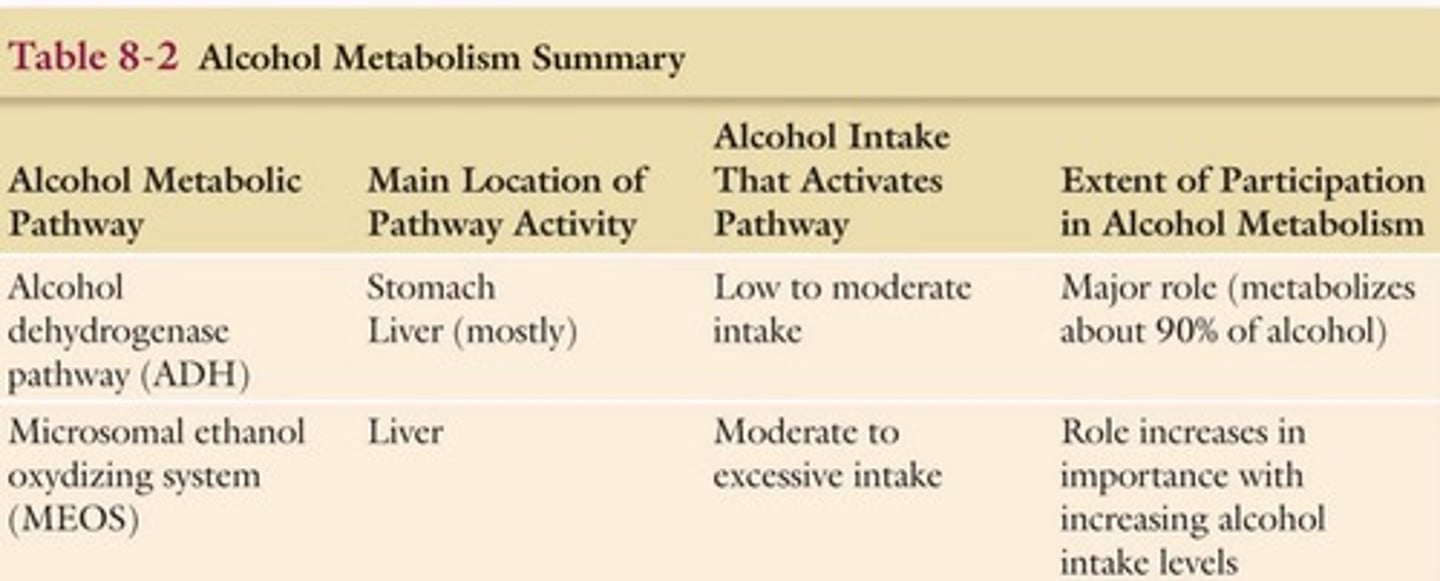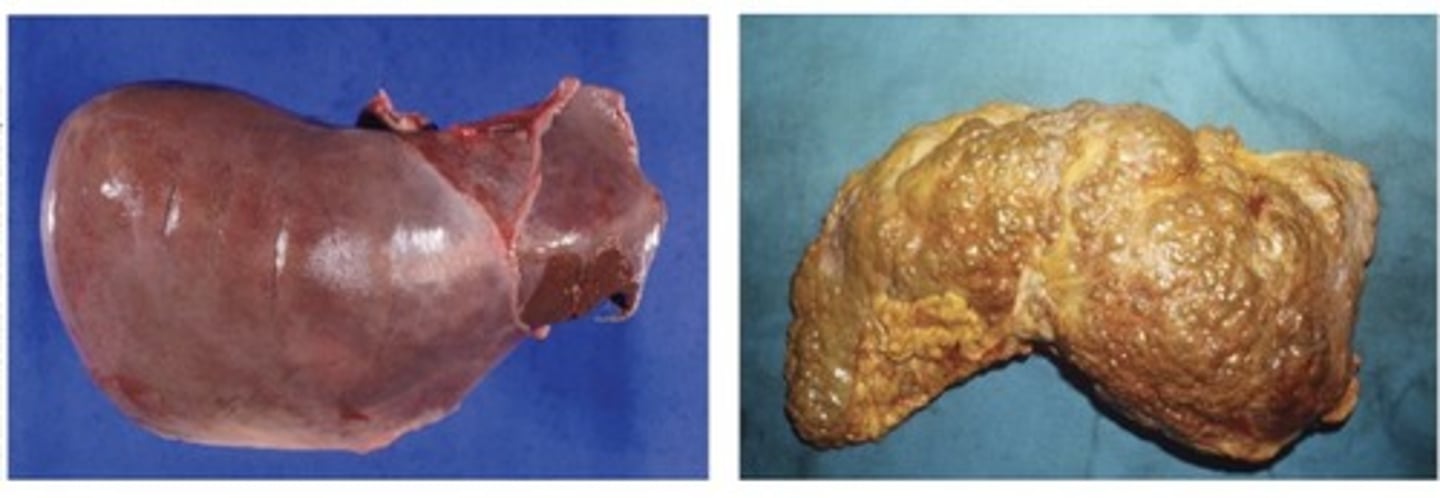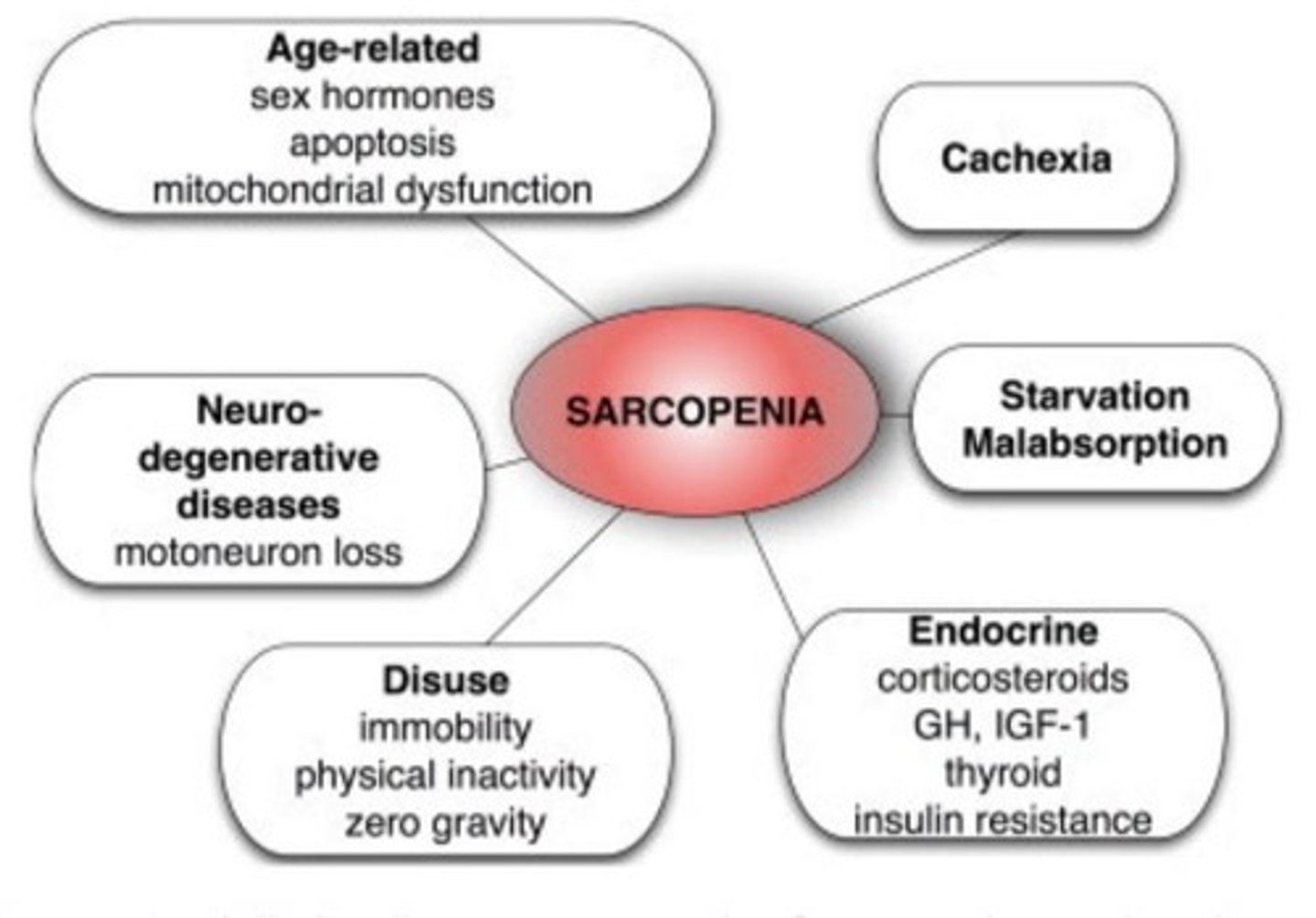Lecture 21: Ethanol Metabolism and Nutritional Impacts
1/23
There's no tags or description
Looks like no tags are added yet.
Name | Mastery | Learn | Test | Matching | Spaced |
|---|
No study sessions yet.
24 Terms
What are the potential functions of ginger phytochemicals like gingerol and shogaol?
They may act as anti-inflammatory agents, decrease blood pressure, and treat nausea (morning sickness). However, they might be mutagenic if pregnant.
In what form are ginger's medicinal effects most potent?
Fresh form; they have much less activity when dry as a tea.
How does caffeine affect CAMP breakdown?
Caffeine inhibits the breakdown of CAMP.
What is ethanol and why is it significant in the body?
Ethanol is a small two-carbon alcohol that is soluble in both aqueous and lipid environments, allowing it to freely pass from bodily fluids into cells.
What is the primary pathway for ethanol metabolism?
The most significant pathway is initiated by alcohol dehydrogenase.

What is the second major pathway for ethanol metabolism?
The microsomal ethanol oxidizing system (MEOS).
What is lipogenesis?
The process of making fat from nonfat substances, mostly occurring in liver cells.
What is cirrhosis and how does it affect the liver?
Cirrhosis is an irreversible condition where fibrous scar tissue replaces normal liver tissue, interfering with liver function.

How does alcohol abuse contribute to malnutrition?
1) Alcoholic beverages may replace nutrient-dense foods, reducing overall nutrient intake. 2) Excessive alcohol intake decreases protein, fat, and carbohydrate intake and essential micronutrients. 3) Alcohol interferes with nutrient absorption due to inflammation in the digestive tract.
What are some effects of alcohol on nutrient absorption?
Alcohol causes inflammation of the stomach, pancreas, and intestine, impairing food digestion and nutrient absorption.
What is the impact of alcohol on the small intestine's mucosa?
Alcohol damage decreases absorption of several B vitamins and vitamin C and allows toxins to enter the portal blood, increasing liver exposure to toxins.
How does alcohol consumption relate to obesity?
Alcohol may contribute to weight gain as liquids are less satiating than solid food and can stimulate appetite, leading to increased energy consumption.
What are some neurological and behavioral disorders associated with Fetal Alcohol Syndrome?
Problems with reasoning and judgment, intellectual impairment, learning disabilities, attention deficit disorder, impaired motor skills, hyperactivity, and delayed development.
What is malnutrition?
A state of nutrition where a deficiency or excess of energy, protein, and other nutrients causes measurable adverse effects on body form and function.
What are the initial effects of semistarvation?
No visible clinical signs, potential impact on reproductive capacity, and a weakened immune system.
What are the consequences of prolonged undernourishment?
Depleted nutrient stores, fatigue, muscle soreness, irritability, decreased heart rate, poor concentration, and lack of ambition.
What are the effects of undernutrition during childhood?
Low resistance to infection, permanent brain impairment, stunted growth, and impaired motor skills.
What challenges do older adults face regarding nutrition?
They require nutrient-dense foods but may have fixed incomes, forcing them to choose between medication and food.
What is wasting in the context of chronic illnesses?
Loss of lean body tissue, often seen in conditions like tuberculosis, HIV/AIDS, and cancer.
What is cachexia?
A condition characterized by loss of lean mass even when caloric intake is sufficient.

What happens when a starving person with an infection is re-fed?
Exclusively fat is gained with no lean body mass, leading to an 'anabolic block'.
What strategies can help induce the synthesis of lean tissue after starvation?
Growth hormone, resistance exercise, testosterone, and anabolic steroids.
What are the storage forms of energy in the body?
Glycogen and adipose tissue.
What is the problem with protein in the context of starvation?
There is no storage form for protein; loss of protein means loss of essential functions.